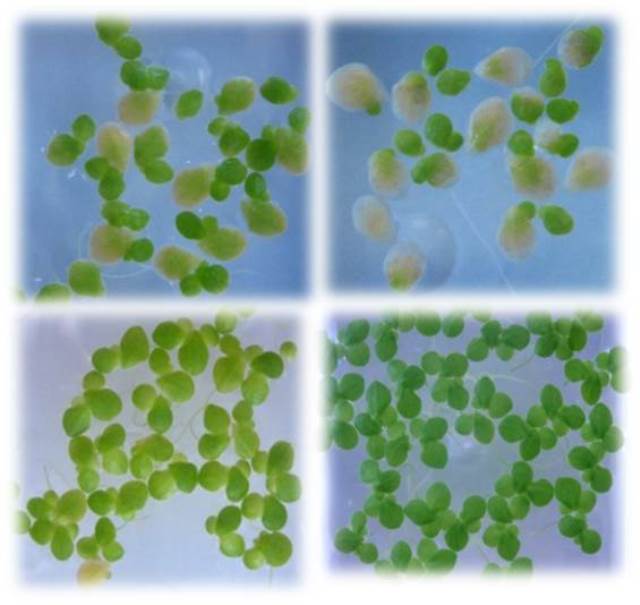Plant Toxicology Research
Overview
Plant toxicology research in the Plant Stress Biology group.
Large numbers of potential toxins are present in the aquatic environment. Over the years the Plant Stress Biology group has been active in characterising both impacts of such toxins, and potential remediation using various species of Lemnaceae, commonly known as duckweeds.
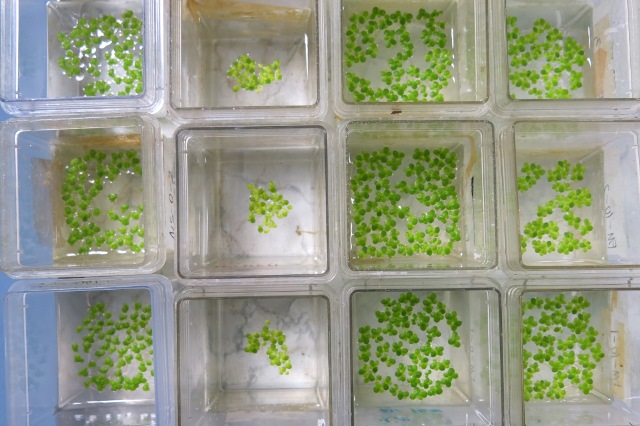
The various Lemnaceae that we use (predominantly Lemna minor and Landoltia punctata) are fast growing species that can be easily manipulated. By using OECD protocols, we generate toxicological data that can be directly compared with those generated by other groups. Moreover, by using chlorophyll a fluorometry, we can non-destructively describe the impact of a potential toxin on various aspects of photosynthetic performance.
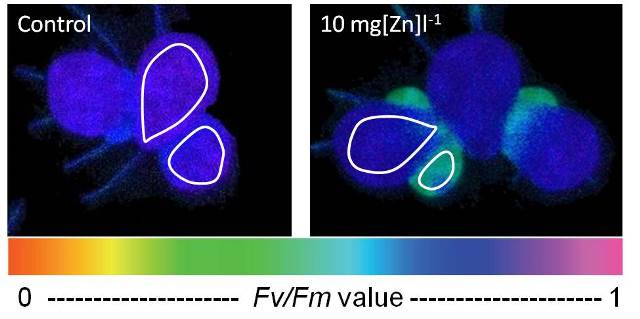
The role of the interface between plants and aquasphere
One of the under-researched questions in aquatic plant toxicology is how the interface between plants and aquasphere modulates toxicity, and may even be a key player in remediation. The lower surface of the fronds of Landoltia punctata comprises a rather loose, spongy structure, quite unlike a typical (terrestrial) leaf surface with cuticle and densely packed epidermal cells. We proposed some years ago that the lower surface of the fronds plays a key role in recognising specific aquatic toxins such as chlorinated phenols, switching on acclimative responses such as the production of class III peroxidases which can mediate the detoxification of chlorophenols into less toxic compounds.
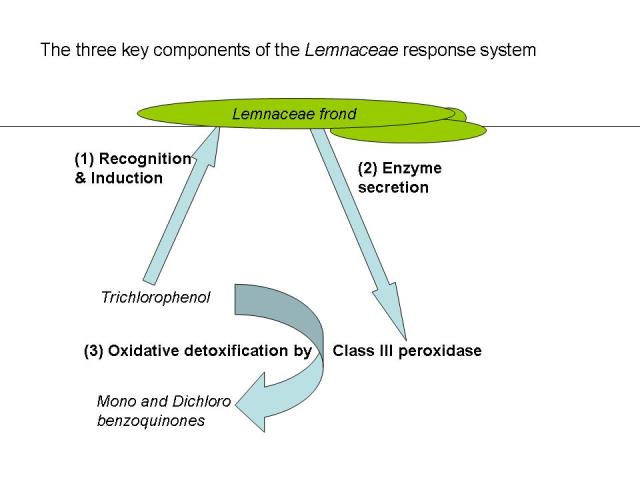
In other cases it is likely that aquatic toxins pass through this plant-aquasphere interface (the role of the roots of Lemnaceae in uptake of toxins is likely to be limited), leading to accumulation in the plant. Metals such as zinc accumulate in fronds with species-specific kinetics, causing impairments of growth and photosynthesis when cellular concentrations are in excess of species-specific threshold levels. Interestingly, accumulated zinc is trophically bioavailable, meaning that it can be taken up by those organisms feeding on the Lemnaceae. By combining the easily manipulated Lemna-growth system with the just as easily manipulated invertebrate species Gammarus pulex, former postgraduate student Elma Lahive (IRC-funded) was able to create a miniature model for trophic interactions. This way, it was possible to visualise zinc uptake by the plant, as well as the efficiency of subsequent transfer to the Gammarus pulex. Given that a substantial percentage of the human population suffers from some form of zinc deficiency, understanding the efficiency of dietary zinc transfer is important.
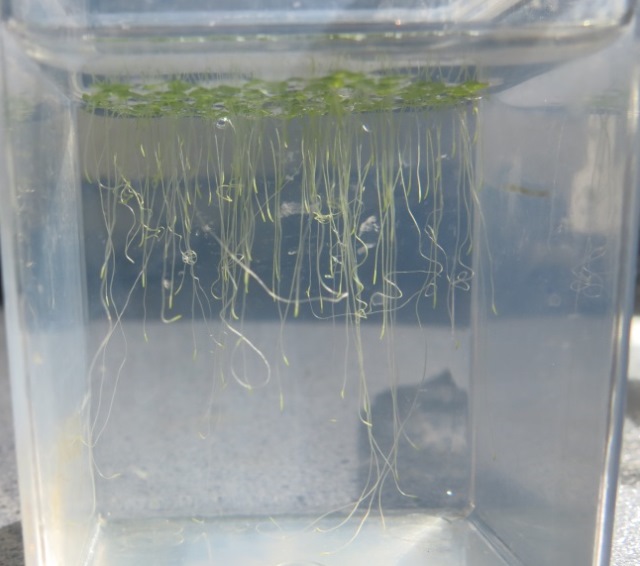
Toxicity of nano particles
A relatively new aspect of toxicology is the study of the toxic effects of nano-particles. However, recent postgraduate Xiaolin Chen (CGC-funded) showed that, in fact, toxicology of nano-ZnO particles depends largely on the pH of the medium. At lower pH values, the dissolution of nano-ZnO is rapid, leading to a rise in dissolved zinc, which in turn may cause toxicity. Conversely, at higher pH values nano-ZnO is stable, but appears not to be particularly toxic. Thus, the environmental impacts of released nano-ZnO (produced in large amounts for various consumer products and industrial applications) depend, amongst others, on the pH of the receiving environment.
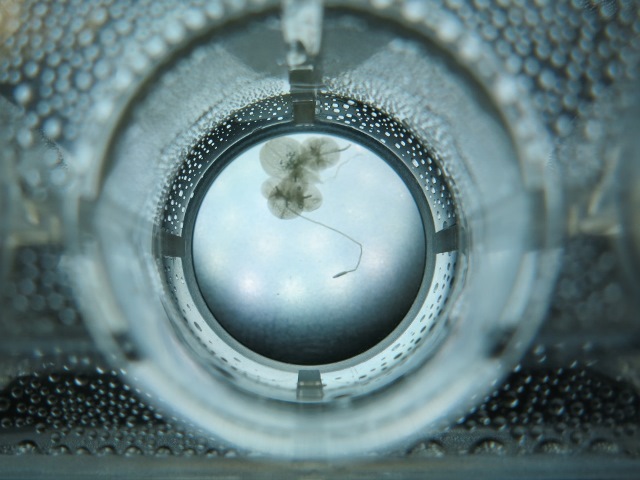
Wood ash toxicology
A particularly timely aspect of plant toxicology is the study of the effects of wood ash on plants. Wood is an excellent source of heat and energy, and therefore a component of the strategy for sustainable energy generation in several countries. However, the sustainability of the wood energy sector critically depends on the after-use of the generated wood ash. Ideally, wood ash is spread in the ecosystem where the wood was raised in the first place, thus recycling the plant nutrients that are present in wood ash. A COFORD-funded project, by Prof John O’Halloran, Dr Frank van Pelt and Prof Marcel Jansen, has enabled the study of the physicochemical characteristics of wood ash, as well as its biological impact. Postgraduate student Lucas Jagodzinski (COFORD funded) has critically analysed both the growth stimulating (due to presence plant nutrients K, P, and Mg), as well as the toxicological (due to presence Pb, Cd and Zn, and especially the alkaline character) properties of wood ash. By identifying positive and negative impacts of wood ash, his work will inform strategies on ash spreading in Ireland.
